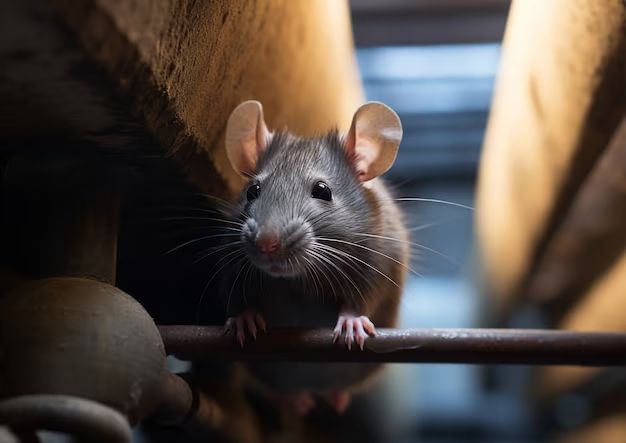Dealing with a mouse problem can be frustrating, especially if you have pets in your home that you don’t want to harm. Mice can cause damage by chewing through things and contaminating food. Getting rid of them in a safe, humane way will take some work, but it can be done. Here are some effective methods to get rid of mice without harming your furry friends.
Page Contents
Why it’s important to get rid of mice
There are a few reasons why it’s crucial to get rid of mice in your home:
- Health hazards – Mice can spread diseases through their droppings and urine. Diseases they carry include salmonella, hantavirus, and lyme disease.
- Property damage – Mice are avid chewers and can gnaw through electrical wires, insulation, wood structures, and more.
- Contamination – Mice get into stored food and can contaminate surfaces they crawl on with feces and urine.
- Allergies – Mouse droppings and saliva contain allergens that can trigger allergic reactions in people.
For these reasons, it’s vital to use humane, pet-safe methods to eliminate mice from your home.
Pet-safe mouse removal methods
Here are some recommended techniques to get rid of mice without endangering your pets:
Seal up entry points
Mice can squeeze through very small spaces to enter a home. Sealing up any cracks, holes, or gaps can help block their access. Pay special attention to the following areas:
- Around pipes and utility lines
- Under doors and thresholds
- Cracks in foundations
- Small openings in walls
- Around chimneys and vents
Use weatherstripping, caulk, steel wool, and other durable materials to seal openings. This forces mice to look for shelter elsewhere.
Clean up clutter
Mice like to hide in dark, enclosed spaces with protection overhead. Reducing clutter removes their shelter spots:
- Organize storage areas
- Keep counters clear of food debris
- Move piles of debris and wood outside
- Keep grass trimmed near home exterior
Removing their hiding places encourages mice to look elsewhere for harborage.
Use humane traps
Humane mouse traps capture mice alive so you can release them outdoors unharmed. These traps lure mice in with bait but do not use snap traps to kill them. Popular humane trap brands include:
| Brand | Price Range |
|---|---|
| Tomcat | $5 – $15 |
| Havahart | $20 – $45 |
| Victor | $5 – $20 |
Place traps along walls or in high activity areas. Check traps frequently and release caught mice at least 5 miles from your home.
Use deterrents
Some natural scents and substances deter mice in a non-toxic way. Try using these around possible entry points:
- Peppermint oil – Strong smell repels mice.
- Mothballs – Unpleasant odor drives mice away.
- Cayenne pepper – Irritates mice’s respiratory tracts.
- Cat hair – Scent scares mice away.
Reapply these frequently, as the scents will fade over time. Do not let pets directly inhale or ingest these substances.
Remove food sources
Mice forage for food constantly. Denying them a food source compels them to search elsewhere. Recommendations include:
- Store human and pet food in sealed containers.
- Keep cooking surfaces and floors clean and crumb-free.
- Pick up fallen bird seed from feeders.
- Compost food waste securely in closed bins.
- Take garbage out frequently.
Removing easy access to food deprives mice of their main survival needs.
Pet-safe mice prevention
Once mice have been removed from your home, take these steps to prevent future problems:
Install door sweeps
Door sweeps seal the gap between floors and doors to block mouse entry. Get sweeps for exterior doors as well as interior doors to block movement.
Use mesh screens
Small mesh screens can be installed over vents, chimneys, and other openings. These allow air flow while keeping mice out.
Fill holes with steel wool
Plugging small holes with steel wool deters mice from gnawing to gain entry. The fine strands get tangled in their teeth if they try to chew through.
Apply weatherstripping
Self-adhesive foam or rubber weatherstripping can seal windows, doors, pipes, and other common entry points.
Store firewood properly
Stacking firewood directly on the ground can attract mice looking for shelter. Elevating it at least 12 inches deters them.
Clean disposal drains
Mice can enter through drains connected to the sewer system. Use drain covers and clean drains thoroughly with bleach.
Install a floodlight
Motion-activated floodlights scare mice away. Place lights near common entry points around your home’s exterior.
Tips for safe mouse removal with pets
When attempting to eliminate mice, take the following precautions to ensure pets stay safe:
- Supervise traps and deterrents – Don’t allow pets access to areas being treated.
- Contain toxins – Avoid using poison bait, as pets may ingest sickened mice.
- Tell children – Keep young kids away from traps or deterrent substances.
- Read labels – Verify any commercial products are non-toxic before use around pets.
- See the vet – If you suspect your pet has ingested a toxin or eaten a mouse, go to the vet immediately.
- Clean carefully – Use gloves and disinfectants when disposing of dead mice or droppings.
With smart, pet-friendly methods, you can eliminate mice in a safe way for your furry companions.
Conclusion
Removing mice from your home is crucial but can be tricky with pets around. With diligence, humane traps, deterrents, and prevention, you can get rid of mice without endangering your pets. Seal up entry ways, use non-toxic repellents, deploy clever traps, and follow other pet-safe recommendations. With a multi-pronged approach focused on smart exclusion and removal tactics, you can eliminate your mouse problem for good.
